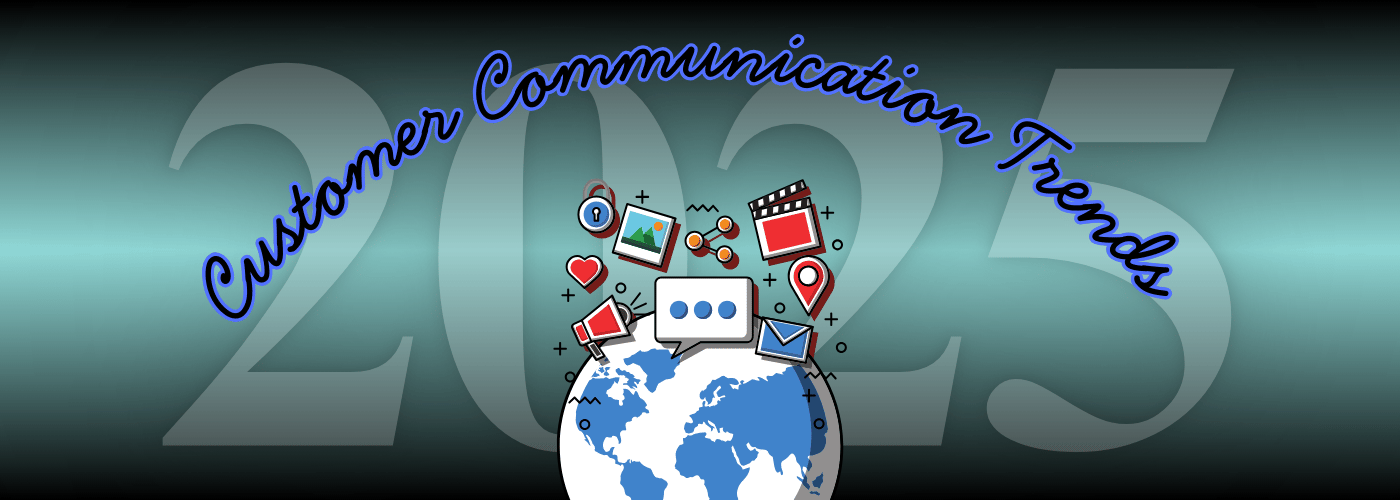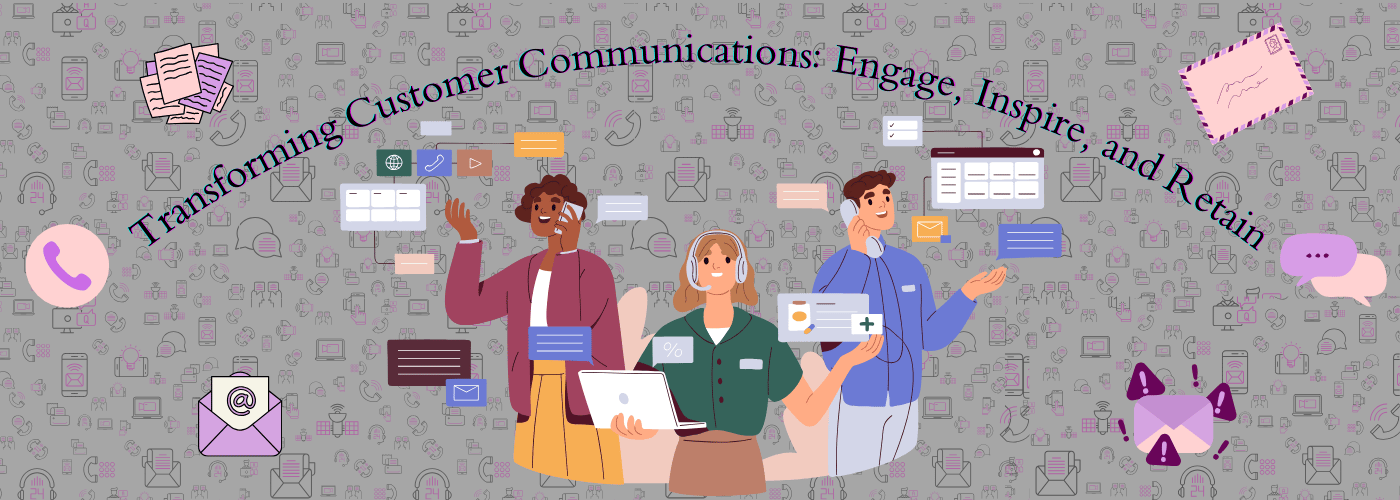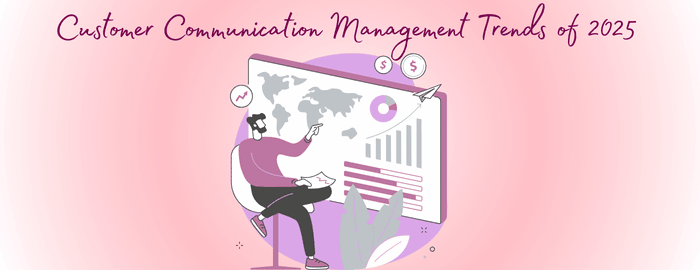
In 2024, significant developments in generative AI and hyper-personalization influenced customer communication management trends, leading organizations to scramble to figure out how to implement the latest tech. Relying on traditional technology causes multiple inconveniences, and clients find it challenging to navigate technology they consider obsolete, if not outdated.
We can see how prevalent AI has become in our lives, from social media to healthcare. Likewise, tech-savvy customers demand the latest technology to be implemented in the products they buy and use. In 2025, companies are adjusting their communication strategies to meet these expectations and deliver positive customer experiences. Customer communication is no longer just an operational function, but the foundation that drives business outcomes and impacts a company’s competitive positioning in the market.
Key Takeaways
This blog discusses the key customer communication management trends in 2025 and the primary reasons for their growth.
It delves into the shift from CCM to CXM, as well as some of the top trends, including Interactive Document Experiences, AI-Powered Hyper-Personalization, Voice and Visual Communication Analytics, and more.
Successful customer communication strategies will balance technological advancements with a focus on human-centered design to deliver exceptional customer experiences.
Market Context of Customer Communication Management (CCM)
The CCM market has grown exponentially, and recent research indicates that CCM’s size was valued at USD 2.08 billion in 2024. It is projected to be worth USD 2.31 billion in 2025 and to reach USD 5.29 billion by 2032, exhibiting a CAGR of 12.6% during the forecast period. Several factors drive the expansion of customer communication management trends, one of which is COVID’s impact. Regardless of the industry, organizations relied increasingly on digital channels for communication, resulting in the development of communication strategies across various domains.
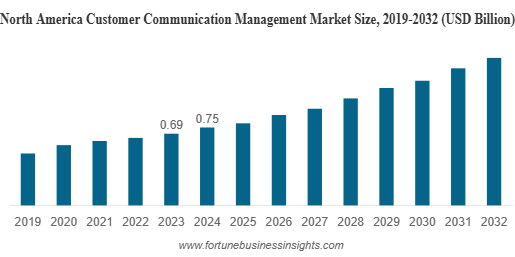
Several factors drive this expansion, one of which is COVID’s impact, but many other factors have converged to propel CCM into a strategic differentiator.
Industry Shifts
Many industries, particularly insurance, finance, and healthcare, are heavily regulated; modernizing communication infrastructures is not a choice but a necessity. The pressure to modernize stems from customer communication management trends evolving:
- Organizations are examined for compliance at all customer touchpoints.
- Clients expect personalization: communication should reflect their specific needs and preferences.
- Competitive differentiation helps organizations stand out in their service experience.
Technological Convergence
Earlier, there were individual systems: customer communication management (CCM), customer relationship management (CRM), and customer experience management (CXM) platforms. However, oragnizations now are looking to implement integrated technology ecosystems to connect them and prevent silos. The integration of various platforms is a response to customer communication management trends that emphasize seamless customer interactions.
CCM is not viewed as a standalone system, but is being enhanced by embedding communication capabilities. We’re likely to see integrated platforms that do the job of a CCM, CRM, and CXM, spanning the entire customer lifecycle.
Compliance and Experience Balance
Organizations want a tool that combines the capabilities of communication management and compliance management. This has been one of the major customer communication management trends. The goal is to ensure stringent regulatory compliance while offering exceptional customer experiences. Regulatory intelligence is incorporated at all points of communication to meet legal requirements. Not to mention that the growing focus on a customer-centric experience has reinforced the need for CCM and similar approaches.
Integration of CCM and CXM
CCM was a strategy conceived to automate the generation of outbound documents. It could range from bills to even promotional materials. These documents were all isolated, focusing more on managing only outbound and inbound communications with customers. Over time, however, CCM has developed into a unified system. CCM today has become the bedrock of Customer Experience, offering personalized communications, integrated messaging platforms, and real-time feedback mechanisms.
This evolution reflects a gradual shift towards one of the newer and more efficient customer communication management trends–Customer Experience Management (CXM) approach, where the focus is not just on the efficient generation of documents, but on creating meaningful interactions that enhance customer engagement, build loyalty, and ultimately drive business success. By embracing the integration now, organizations can position themselves.
Key Trends Reshaping Customer Communication Management Market
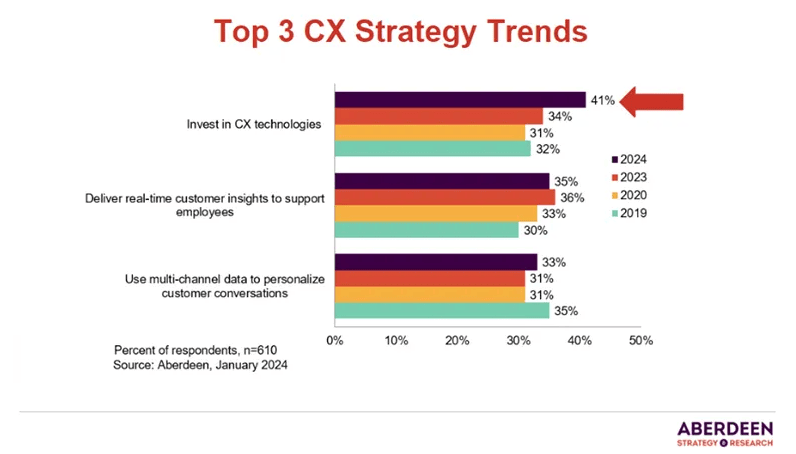
Customer communication management trends have evolved over the years. The technological evolution has transformed how organizations strategize for customer enhancement. These comprehensive solutions continuously upgrade with the latest communication technology.
1. The Rise of Interactive Document Experiences

From the dawn of email, marketing and customer communications have changed more than ever before. Earlier, we had static PDFs and boring emails, but now these emails aren’t just informing people; they are engaging customers by featuring dynamic content, videos, animations, and clickable elements.
The shift from static to dynamic represents a pivotal change in customer engagement strategies and customer communication management trends. Such documents don’t just allow customers to click on them, but now end users can fill out fields, watch embedded videos, respond to surveys, or even explore personalized product offers. All of this is possible under the same interface!
Why Does It Matter?
Now more than ever, people have a short attention span, and getting your content across to the customer is no easy feat. This is exactly what interactive documents offer: documents that capture customers’ interests and make information easier to digest. Such documents would be easy on the eye and interactive, leading to retention of information.
Interactive content sees 52.6% more engagement than static content. Simply put, organizations recognize that customers spend more time engaging with interactive content. BuzzFeed is an excellent example of utilizing interactive content in emails; their preferred type of interactive content is quizzes. This enhances BuzzFeed’s exposure but also helps it collect customer preferences and data.
Let’s consider another real-world application of interactive content: an insurer will always need to send policy documents to clients. Instead of a static PDF, an interactive policy document could feature clickable sections that expand to provide detailed information about the coverage details. It could also include interactive elements, such as a slider, to help clients visualize how premiums change based on different coverage levels or deductibles.
2. AI-Powered Hyper-Personalization
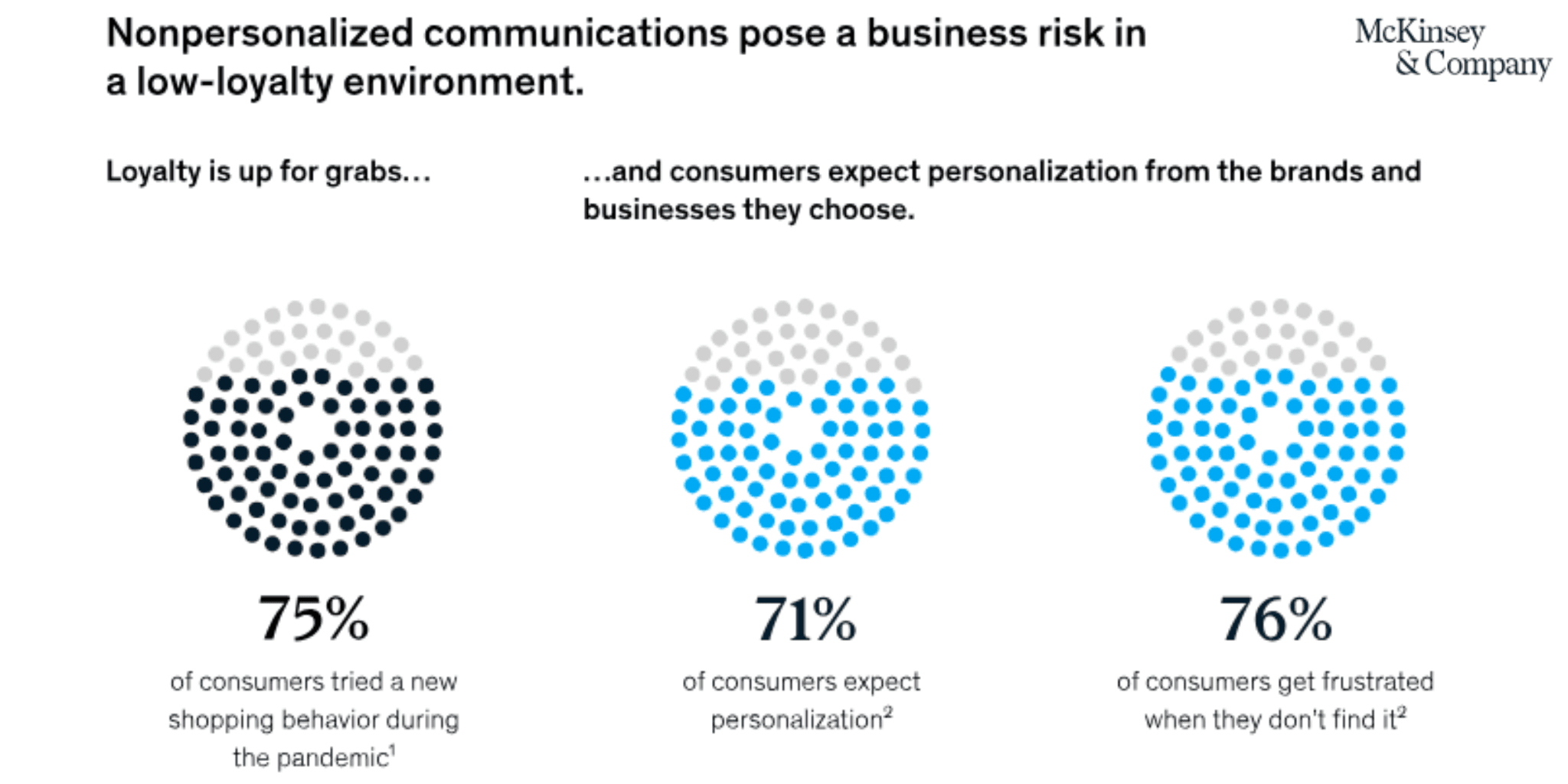
AI-powered hyper-personalization is a 2025 customer communication management trend that utilizes advanced algorithms, machine learning, predictive analytics, and real-time data processing to analyze customer data. It uses the analysis to create a unique journey for every customer. That’s what hyper-personalization means; rather than simply segmenting customers into broad groups, it enables communication tailored to individual customer needs, preferences, behaviors, and contexts.
It is evident that the market is saturated; understanding what customers like and need, and when they need it, is what gives you a competitive edge. Hyper-personalization ensures that customers receive relevant messages and not generic ones.
Why Does It Matter?
Hyper-personalization is a dominant trend that provides users with an unforgettable experience. This fosters a sense of connection between the brand and its customers. Studies find 76% of customers are unhappy due to non-personalized or generic communications. Today’s clients demand tailored experiences and are willing to pay more for them as well. Considering this, organizations need to step up and meet their expectations in order to survive in the market.
Did you know? American Express sends out marketing emails that suggest credit card offers tailored to your interests based on your previous purchases. For instance, they would market airport lounge offers if you’ve recently booked a flight. Such levels of customization make customers feel valued and understood, driving loyalty and retention.
3. The Potential of Voice and Visual Communication Analytics
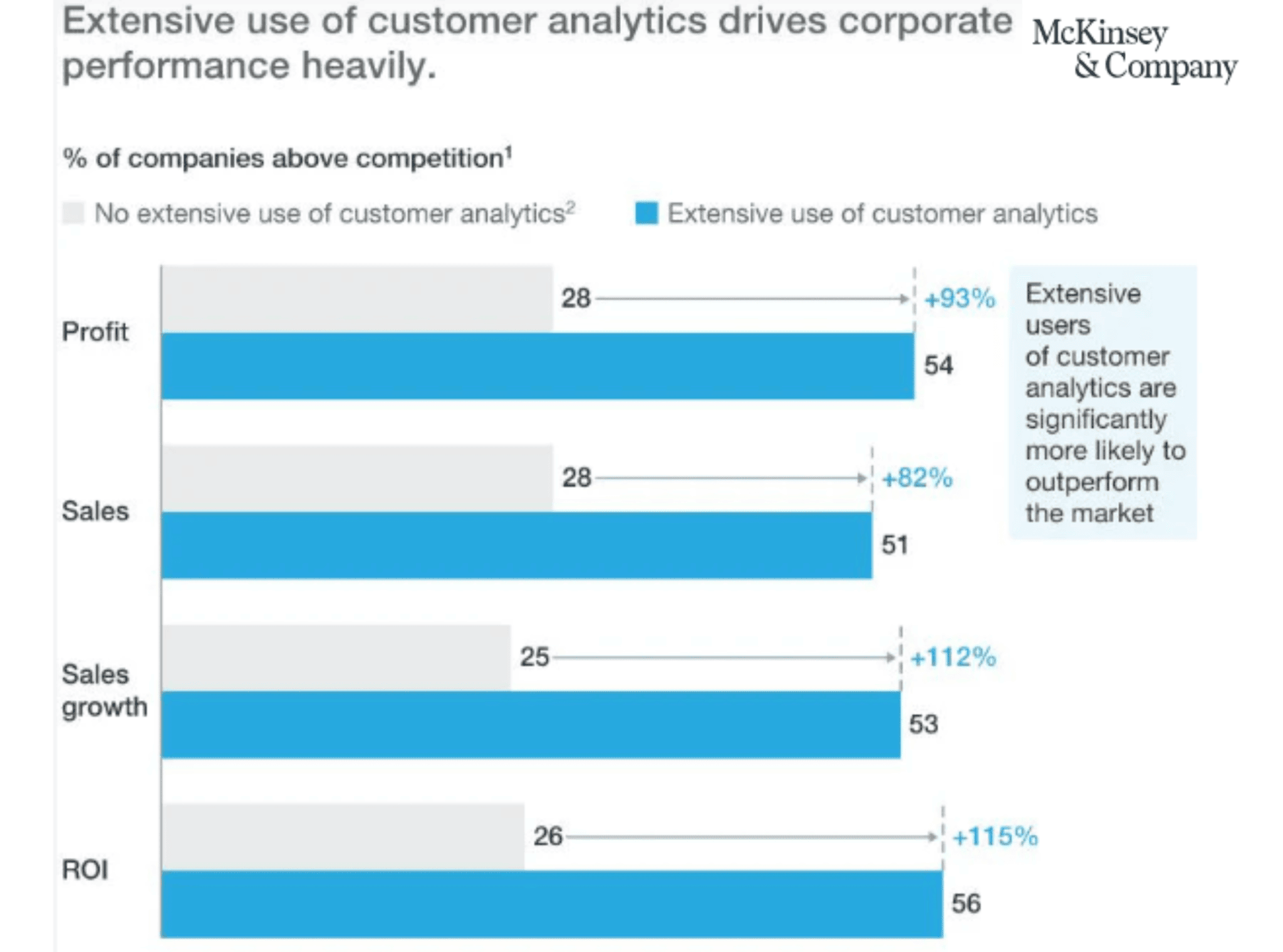
Voice Communication was the most common means of customer support for so many decades. However, those conversations were not systematically analyzed. In 2025, organizations mine voice interactions to gauge customer satisfaction, detect frustrations, and better train their service agents. Technologies like Natural Language Processing (NLP) engines and speech emotion detection are used to detect customer sentiment and intent. This allows real-time response and intervention protocols to be implemented.
Visual communication analytics is no longer merely a monitoring tool but has transformed into sophisticated intelligence that can convert customer interaction into actionable insights. It uses AI, facial recognition technology, and visual pattern detection to analyze visual cues during customer engagements.
Why Does It Matter?
Understanding how your customer feels based on the tone of their voice or facial expressions during video calls promotes empathetic customer service, leading to quicker resolutions and happier customers. Visual analytics also helps improve accessibility and UX design, creating a data-driven feedback loop.
Imagine what could be done with AI voice analytics. When a customer service representative senses that a customer is frustrated, the agent can then adjust their approach, perhaps prioritizing the call due to the frustration. This could lead to a quicker resolution or something as simple as a more empathetic response, fostering a strong relationship between companies and their customers.
4. Regulatory Intelligence Integration
The integration of regulatory intelligence into communication workflows has become prevalent in the past decade. Organizations have been gathering and analyzing regulatory landscapes for a long time. Now, with a widespread demand for security and privacy, the trend is to embed regulatory insights into customer communication.
Systems monitor evolving laws like GDPR, CCPA, HIPAA, and industry-specific standards (like MiFID for finance or HIPAA for healthcare). Such monitoring helps with real-time adjustments to communications if there are any changes in regulations. So it can track, interpret, and adapt the necessary changes into customer communication processes.
Why Does It Matter?
Regulations are constantly changing, and with such high non-compliance penalties, investing in regulatory intelligence is not an expense but rather yields significant benefits. Organizations whose customer communications meet compliance requirements prevent the risk of fines, lawsuits, reputational damage, and customer distrust.
If banks start using regulatory intelligence, they can dynamically adjust their communication templates, consent forms, marketing practices, and customer data handling processes without the need for any manual intervention.
Privacy-Enhancing Technologies (PETs)
Privacy-enhancing technologies, simply referred to as privacy-preserving technologies or data protection technologies, have become a critical aspect of customer communications. Today’s customers are literate about their privacy rights and expect the utmost level of security. Brands that prioritize customers’ privacy can build longer-lasting relationships in a world where data leaks and misuse have become commonplace.
With hyper-personalization and proactive engagement, customers worry about their data being misused, and organizations may be teetering on the edge of regulatory compliance. PETs prevent this by not exposing raw personal data. PETs include methods like homomorphic encryption, anonymization, access controls, and solutions such as differential privacy, federated learning models, zero-knowledge proofs, synthetic data generation, and confidential computing.
Why Does It Matter?
An IBM data breach report of 2024 mentions that the global average cost of a data breach in 2024 was USD 4.88M, which is a 10% increase over the previous year and the highest total ever. Organizations must find ways to gather data while ensuring they meet compliance requirements. PETs can assist with a diverse range of privacy regulations, including the GDPR in Europe, the CCPA in California, the PIPL in China, and others.
Let’s consider one of PET’s solutions: federated learning, where a bank can build an AI fraud detection model based on data patterns across users without ever accessing individual account details.
Perfect Doc Studio (PDS)
Perfect Document Studio (PDS), developed by our organization, seamlessly integrates with existing platforms to enhance communication strategies and improve customer experiences. PDS is a powerful document generation tool that also manages omnichannel customer communications. PDS is an intuitive platform with simple-to-use tools that help design and deliver personalized business communications in over 100 languages. Being natively integrated with BPM and CRM solutions, it helps communicate with customers in over six different channels. PDS is the most cost-effective yet powerful solution in the market.
Who uses Perfect Doc Studio?
Businesses of all sizes can use PDS; it’s a solution designed to scale with the organization as it grows. This makes it the perfect choice for small business owners due to its pricing and packed features, while enterprises can effectively utilize PDS and its capabilities.
The Future of Customer Communication
The future of customer communication management trends will continue to evolve, emphasizing the need for organizations to embrace these changes. The shift from a journey-centric approach to a customer-centric approach has already happened. Organizations currently embracing these trends will invest in the latest technology and infrastructure to position themselves as a means to deliver exceptional customer experiences. By understanding and implementing current customer communication management trends, organizations can enhance their competitive positioning.
The most successful communication strategies strike a balance between technological innovations and human-centered design principles. By developing a comprehensive approach that integrates technology, process, and people, organizations can gain capabilities that serve as competitive differentiators in an increasingly crowded marketplace.
FAQs
What is Customer Communication Management (CCM), and why is it important for insurance companies?
Customer Communication Management is a strategic approach that reflects current customer communication management trends. Organizations utilize CCM systems to create, deliver, store, and retrieve customer communications. The aim is to enhance customer experience (CX) and improve business outcomes. Companies have recognized the impact that customer experiences have on business, including retention rates, sales, and the overall future of the organization.
What is Customer Experience Management (CXM)?
Customer Experience Management (CXM) is a holistic approach to managing customer communications. It encompasses all aspects of how customers interact with and perceive a brand or organization, aiming to enhance customer interactions and exceed expectations.
How soon can organizations expect to see a return on their investment in Customer Communication Management (CCM)?
Most organizations see payback periods of 1 to 2 years on their CCM investments. Of course, when it comes to larger enterprises, they can expect faster returns due to the scale of the organizations as well.
What benefits can companies expect from implementing a CCM solution?
The ROI can be witnessed in multiple areas, to name a few:
- Reduction in template management and production costs
- Improvement in customer retention rates
- Reduction in call center volume
- Reduction in compliance-related issues
- How can I measure the success of my CCM strategy?
Success can be measured through various metrics, including customer satisfaction scores, response times, resolution rates, and overall engagement levels. Additionally, tracking ROI and analyzing customer feedback can provide valuable insights into the effectiveness of your CCM strategy.

